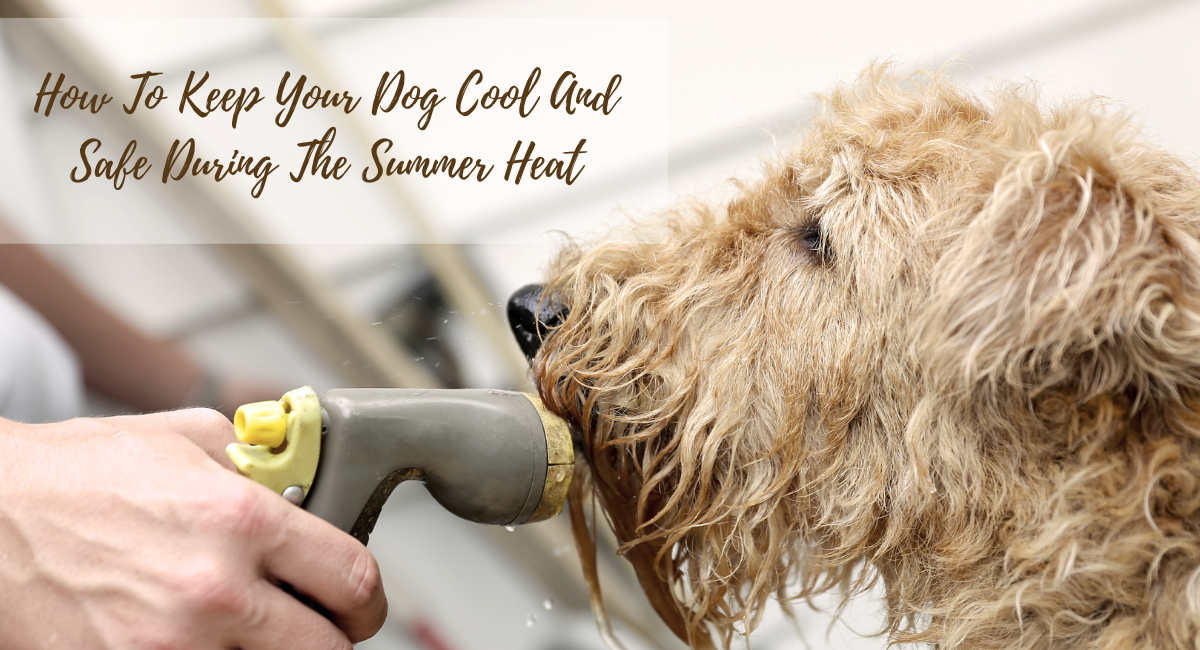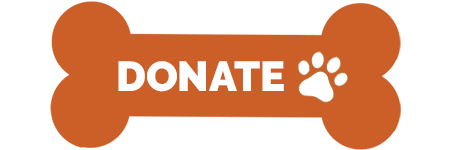How To Keep Your Dog Cool And Safe During The Summer Heat

You may enjoy summertime, long summer nights, and clear sky, but your Fido may not share your enthusiasm toward the summer season.
It’s common to see dogs heavily panting during hot days, especially if you are the owner of a larger dog breed with a more profuse coat.
Some breeds do better during the summertime than others do, but they are all in danger of suffering from really high temperatures and experiencing heatstroke.
To help your dog go safely through hot days and nights, we’ve got a few tips.
First, let’s see what a heatstroke is and how to recognize it.
Trust us, with so high temperatures right now, recognizing heatstroke symptoms in your dog could actually save their life!
Heatstroke in Dogs
Just like people do, dogs may suffer from high temperatures and humidity.
If you are a first-time dog owner, you should know that heatstroke in dogs may lead to life-threatening consequences.
That nice and long walk or a run that you planning on a hot day with your dog next to you? It may help you feel great, but your dog may suffer tremendously. To avoid this learn about heatstroke causes and symptoms.
Heatstroke in Dog: Causes
As expected, heat is what causes heatstroke in dogs. Summer days and even nights come with the biggest risk of heatstroke in dogs, but know that overheating may occur even when the temperatures are mild.
Here are the most common causes of heatstroke in dogs:
- Warm/hot environment
- A warm and humid environment with inadequate ventilation
- Animals being left in an unventilated room
- Animals being left in a car
- Deficient shade
- Insufficient drinking water
- Extreme exercise
Now, that you know about the causes do your best to avoid them. Furthermore, go the extra mile and create an environment in which your dog will feel cool and safe – we will provide more tips on how to do that below.
Heatstroke in Dog: Symptoms
The best way to help your dog if he experiences overheating is to react as soon as you recognize the symptoms.
Below, you will find early overheating signs, and warning heatstroke signs that will demand your fast reaction and immediate reach to your veterinarian.
Early Overheating Signs:
- Excessive panting – puppy breathing fast while sleeping after a lot of playing and exercise in warm temperatures is common practice, but if your tiny Fido is breathing faster than usual you might contact your veterinarian
- Excessive drooling
- Rapid heart rate
- Dizziness
- Lack of coordination
- Fever
- Lethargy
- Lack of responsiveness
Warning Heatstroke Signs:
- Collapse
- Seizures
- Vomiting
- Muscle tremors
- Diarrhea (possibly with blood)
- Blue or bright red gums or tongue
- Coma
- Little to no urine production
Breeds Prone to Heatstroke
All dogs are prone to overheat, but some may take it harder than others.
For example, breeds with flat faces are at higher risk of experiencing overheating in a short period.
Next to this, breeds with long and thick hair are more prone to heatstroke, which is why when getting a dog it is crucial to compare dog breeds first and to know exactly what you can expect from the breed in terms of health, care, and nutrition. Plus, extra preparation will enable you to be a better dog owner.
Some of the breeds that are at a higher risk of overheating are:
- Shih Tzus
- Pugs
- Boxers
- English Bulldogs
- French Bulldogs
- Pekingese
- Boston Terrier
- Lhasa Apso
- Japanese Chin
Pro tip: To help every dog stay hydrated know that dogs should drink about 1 ounce of water for every pound that they weigh, every day.
Ways to Keep Your Dog Cool in the Summer
Since overheating can be really dangerous, creating a safe and cool environment for your dog is crucial on summer days.
To cool down your dog follow these steps:
- Provide a cool area. A dog needs shade on hot days, a place under a fan, or a room with an air conditioner. If you have tiles in any room keep the door open for your dog to chill there.
- Hydrate your dog. Enable easy access to fresh and clean water.
- Brush your dog regularly. Regular brushing will not only keep mats away but will trap moisture from the humidity.
- Plan outdoor walks. Avoid walking in the middle of the day. Walk your Fido early in the morning and later in the evening. Know that too hot asphalt or concrete can apply serious damage to paws.
- Think about indoor games. In summer, dogs tend to spend more time indoors which is why they are less active. Since activity keeps their joints healthy and their mind sharp, implement indoor games.
- Set the outdoor shade. If you have a backyard you should have a well-designed shade for your dog. If you have a large tree that is only a plus. Think about portable sun shades, patio umbrellas, or even pop-up canopies. If you have sprinklers, set them during the hottest hours and let your dog run through them.
If you want your dog to experience some beach time, make sure that you go well-prepared.
Provide a needed shade, water specifically to serve to your dog, and cooling pads, under a shade.
Hot sand may be an issue and it may result in burning paws. To avoid this have a wet sandy area or pour on your paws water regularly.
How to know if the sand is too hot for your Fido? If it is too hot for you, it is too hot for your Fido.
Good to know: If you have a short-coated breed or a freshly shaven dog, apply dog-friendly sunscreen on your dog.
Last, but not least – STAY HYDRATED!
Don’t forget to stay hydrated on these hot days. Drinking water ensures that you stay healthy and hydrated which is crucial on hot summer days. When you are well, your Fido is well as well.
A very humane plea: Don’t forget about stray animals that suffer tremendously on summer days, and help them by leaving a water and food bowl in front of your home, or any free corner.
Give with Confidence
At HSNEGA, we want to remember the amazing rescues that come to stay with us. All of the animals pictured on this site have been with us at some point. Some have already found their forever homes, but some may still be here at HSNEGA! The Humane Society of Northeast Georgia is a 501(c) (3) non-profit organization (Federal Tax ID #58-0678817) and has received top recognition from the following charity rating organizations:


